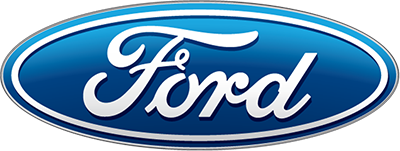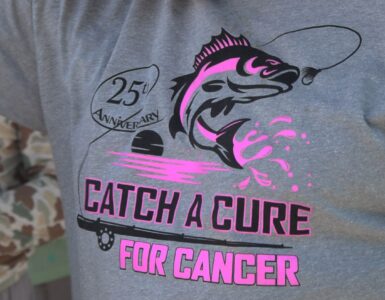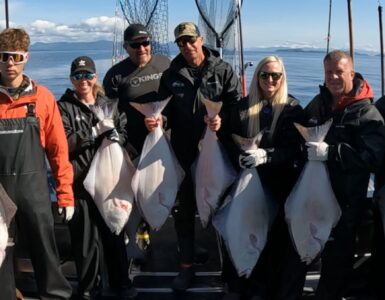(Adam) Thanks for tuning into KSL Outdoors, I’m Adam Eakle. (tonya) and I’m Tonya Kieffer. (adam) Tonya we are up at Strawberry for the 5th annual DAV event, that’s the disabled veterans event. (tonya) and it’s awesome, we got here, the sun is rising and there is a ton of people here ready to support our country’s veterans. Couldn’t ask for better support. (adam) beautiful day, I think we’ve got 80 veterans coming out. I think they are about here. We’ve got to get the boat in the water. (tonya) yeah. (adam) alright let’s get a vet.
(lady greeting) morning, if you need a license, table on the right, if you don’t table on the left and they will direct you to the boats.
A calm, beautiful Strawberry morning greeted the eighty disabled veterans and over seventy five volunteers and their boats that showed up for the days events.
(todd on mic) Boat #16 please report to the ramp to pick up your veterans.
This event actually started with an on-line fishing forum called bigfishtackle.com. When the members needed help, a non-profit organization was formed called the Utah Disabled Veterans Fishing Foundation. Todd Hall is the director.
(Todd Hall, Dir. Utah Disabled Fishing Foundation) We work closely with the VA Hospital and they tell us down there that starting in the wintertime, they start asking about it. There’s a bunch of them that really look forward to this event every year and there is quite a lot of them that this is really the only time they get to get out and go fishing.
(Bruce Williams, Disabled Veteran) “It’s been a long time and I’m going with my oldest son who is in a wheelchair. We are both veterans.”
(Bruce Williams) this is a nice organization to do a thing like this.
(James Bradshaw, Volunteer/Owner Maniac Custom Lures) they give so much to us, we need to give something back I think.
(Glen Harward, Heber Volunteer) It’s the least we can do
(Justin Johnson, U.S. Army Veteran/Volunteer) Not just giving back to the veterans but I like being around them too, get back up here and being around fellow brothers and sisters.
(Rob) I’m Rob, I’m your captain. (lady) thank you sir for your assistance. (rob) we’ll get you guys out, get you some fish and make it a great day.-
(Taking off) (tonya) alright guys you ready. (taking off) woo hoo.
(Jared Johnson, Rocky Mountain Tackle) “We are going to chase kokanee, trout anything that will cooperate for them.”
We are out with Jared Johnson and his beautifully rigged Rocky Mountain Tackle boat.
(adam) Oh it’s a good cutty.
On board we have Andie Morris, a twenty two year, U.S. Navy Reservist, who is also a VA Hospital Social Worker.
(Andie Morris, VA Hospital Social Worker) this is extremely therapeutic. For two reasons, they are getting one with nature and they are getting to do all that but they are also seeing people who are sincerely thanking them for the service. It’s not just the words, it’s actions.
(Jared Johnson, Rocky Mountain Tackle) I met a number of guys this morning as we were up early helping set up and they are just proud to be Americans, proud to support, come out and bring their boats and whoever they can bring and volunteer time and effort, it’s really great.
Back on the dock, everyone had success, even if they didn’t catch any fish. For most, it was a chance to forget about troubled memories and remember what the outdoors means to them and their families.
(Richard Luke, Desert Storm Medic Veteran) I have nightmares three to four times a week. I still hear my patients scream at night and this gives me a chance to get out on the water, relax and forget about all the bad stuff for awhile. So it means the world to me to get out here.
(John Collard, Disabled Veteran) I’ve had PTSD for almost 40 years and for the first time in a very long time I’m able to get out and be part of the community and part of life.
(Tag toss to tease) “Well some of the veterans caught some fish and the ladies, the veterans on our boat they definitely had a good time.” (tonya) “They did and their kids got to reel in some fish. You know what the weather held out, it didn’t rain.” (adam) “Little touch and go there for awhile. I think just getting some of these veterans out on a boat, out on the water experiencing Strawberry is what this event is all about. If you want to help out, log onto bigfishtackle.com and volunteer next year.” (tonya) “and now coming up on KSL Outdoors.”
(Eric Freeman) We track the fawns using radio telemetry.
A mortality study on mule deer is underway on the Monroe.
(Adam) that story in just a moment, but first tonights quiz question.
***********
(Standup intro) Welcome back to KSL Outdoors, I’m Adam Eakle. A few years ago, sportsmen and biologists in Utah noticed a decline in the mule deer population. So the DWR, along with hunters and researchers from BYU, are in the middle of a 4 year fawn study to find out why.
The search begins before dawn.
(Eric Freeman – Field Coordinator) Each morning we go out and we listen.
High on Monroe Mountain, researchers monitor radio collar signals from does that have just given birth to neonates, or fawns.
(Eric Freeman) In March, we captured adult mule deer, collared them, and inserted vaginal implant transmitters so that we know when females give birth.
(Eric Freeman) First we’ll listen to her collar to get a good idea of where she is so that we can get in close, then we’ll move in closer and listen to that VIT signal.
It’s all part of a DWR study to determine why there is a decline in Utah’s mule deer population.
(Vance Mumford – DWR Wildlife Biologist) One of the factors that can affect mule deer numbers are predators. And the big question is always if we control predators or reduce them, is that going to help our mule deer increase? This study is designed to answer that question as far as coyotes go.
(Vance Mumford) We took the mountain, and we divided it in half. During this 4-year study, we’re going to control coyote numbers on one half for 2 years, then switch and control it on the other half.
(Vance Mumford) At the same time we’re looking at these coyote numbers, we’re looking at the survival of newborn fawns from day one to 6, 7, 8 months of age.
Their goal is to collar between 60 to 80 fawns this summer, and on a mountain this big, that takes a lot of time…
driving,
hiking,
(Eric Freeman) Let’s go in and see if we can’t find them.
and searching.
(Eric Freeman) We track the fawns using radio telemetry.
Eric Freeman is a BYU graduate student and field coordinator for the project. He and other students have been on the mountain for weeks.
(Eric Freeman) When the fawns start to drop and the birthing season begins, it’s very synchronous and it all happens in a couple weeks.
(Nate Talbot – Project Technician) Oh, it’s been awesome, best summer job I ever had.
But after hiking all morning, it seems THIS fawn doesn’t want to be found.
(Eric Freeman) For this particular doe, we’ve spent upwards of five hours now looking for her fawns and have been unsuccessful.
Meanwhile, on the north side of the mountain, a new VIT signal is detected.
Once the transmitter is found, they know a fawn is nearby. And then…
(Brandon White) We’re gonna fly here in just a minute.
We’ll weigh the fawn.
Oh, she’s not little
She’s 10.16 pounds.
(Nate Talbot) Then we’ll take some measurements. We’ll measure the hind foot length.
I’ve got a hind foot length coming at ya.
New hoof growth, let’s go 1,2,3.
And then we’ll put the collar on it.
Collar frequency 153.720
What else do we need? Gender.
We’re gonna set him right back here where we found him.
(Nate Talbot) You don’t want to get the fawns abandoned or anything. You want to get out of there so the mother’s not too worried about them so she doesn’t leave them.
OK, we’re in great shape.
After a long day, finally locating and collaring a fawn is a huge relief.
(Nate Talbot) It’s really exciting, especially when you’ve been walking around for a while starting to think there’s no fawn in here.
After all the fawns have their radio collars, BYU researchers will monitor them every other day to make sure they are surviving.
(Vance Mumford) If they get a mortality signal from the collars, they go in and investigate and try to determine the cause of death.
(Vance Mumford) Very important study, and we’re very excited about it. And I think the public is very interested in it.
Last year, about 50% of fawns died in their first 6 months. So it’s important information the DWR can use to determine why deer herds are reduced. Time now to head back to Salt Lake to the guys at Fish Tech for tonights fishing report.
**************
(Adam) “Welcome back to KSL Outdoors, I’m Adam Eakle. We came to the Outdoor Retailers show, you know the public isn’t allowed in here so we decided to sneak in the back door, to give you a sneak peak of some of the new gear you’ll see this year.”
(Adam) “and of course we had to stop by Redington rods, Brandon Morris with Redington you guys have a new release of rods coming out in just a few weeks.” (brandon Morris) “We do, this is the Vapon Red. It features our new power grip. We co-designed this with wind grip technologies. The leader in golf grip design.”
(Brandon Morris, Redington) “This rod has won two awards already for us this year.”
(Brandon Morris, Redington) “So this is our new butter stick, a fiberglass rod. Fiberglass has kind of rejuvenated in the fly fishing space.”
(Brandon Morris, Redington) “If you’ve got a small stream around and you love to fish dry flies for trout. You can’t beat this rod, it’s a lot of fun.” (adam) “Three piece it looks like.” (brandon) “It’s a three piece and this rod flexes all the way down to the cork.”
(Adam) “And who can’t go out into the woods without a nice throne to sit on right Justin?” (Justin Hellander, Black Pine Sports) “You bet.” (adam) “What is this?” (justin) “This is called our turbo toilet.”
(adam) “Show me the capabilities of this thing.” (justin) “Well even a big feller like yourself can use this thing. It’s got a 350 pound capacity. (adam) wow. (justin) not inside obviously. The beautiful part about it is the storage capacity. There is these hinges on the inside. You squeeze it collapses down to nothing.”
(Justin Hellander) “This is our turbo tent.” (adam) “It’s like an easy up.” (justin) “Exactly, from the time you break it out of the bag. Just stake your four corners out it takes you less than sixty seconds. What you do is go around, secure your legs, grab the center of your tent and walla you are camping.”
(Adam) “Alright but your are backpacking, you can’t quite carry a tent that big, Andy Church with Easton, what have you got here. This looks definitely light, definitely pack able.” (Andy Church, Easton Mountain Products) “This is a two person, three season tent, two doors, two vestaples. And this utilizes our new Syclone tent pole technology.”
(Adam) “You guys actually won an award for this?” (Andy Church, Easton Mountain Products) “Yup, won the gear institute, best new gear for 2013 for the Outdoor Retailers show, we are very proud of that. This is a long grain, multi directional spun, S glass, fiberglass pole.”
(Andy Church, Easton Mountain Products) “This is the same weight as aluminum, the same cost of aluminum, but it’s 80% stronger and more resilient to taking a set flex like aluminum. That’s one of the downfalls of aluminum. If it over flexes it becomes weak, this won’t do that. It releases the energy, always go back dead flat when you take it out of the tent.”
(Adam) “So a lot of these products you won’t actually see until the end of this year or the beginning of next year. What amazes me is how many of these products are actually designed by companies right here in Utah. Time now to dive into tonights Utah Field Guide.”







Add comment